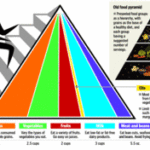Americans spend an estimated $40 billion dollars a year on diets, fitness equipment and heath club memberships, yet the number of overweight Americans continues to rise. Although studies indicate that Americans are eating “better” now than they were in the late 1980’s, there are still an estimated 58 million overweight adults in America.
There are a number of reasons Americans are still gaining weight in spite of the diet craze and eating “better.” The Surgeon General’s office released a report on the state of American health calling this trend in increasing body fat “an epidemic.” Americans just aren’t eating healthy enough, period. The healthy eating index shows that 88% of Americans have diets that are poor or need improvement. Less than 20% of people meet the daily recommendation for fruits and vegetables and only 26% meet the daily recommendation for dairy products.
In addition to America’s failure to eat healthier, America is “disgustingly overfed.” Americans overeat, gain weight, diet and gain back even more weight. Fad diets aren’t helping the sad state of America’s health either. Plain and simple, diets spell disaster, especially ones promising “quick” results.
Studies indicate that 99% of diets fail in the long run. In spite of the odds, people continue to try everything from the grapefruit diet to the blood type diet. These diets fail mainly because they only offer a short-term solution to a problem that has existed for decades for many Americans–over indulgence.
Diets such as the Scarsdale diet offer a strict two-week program that promises to help you lose up to a pound a day. After 14 days, the dieter gets to loosen up a bit and eat a little more for 2 more weeks. After that, it’s up to the dieter. My question is this: how can 4 weeks of dieting erase a lifetime full of overindulgence and unhealthy food choices? The Scarsdale diet does help take the weight off, but in order to keep it off, you would have to be on a restrictive diet for the rest of your life – no rice, no potatoes, no sweets, no butter, no whole milk, no cream and the list goes on and on. The Atkins diet preaches low-carb and high protein and high fat as the key to successful weight loss. According to Sara Bolduc, R.D., “the lack of carbs in this diet sends you into starvation mode.” Because of this, metabolism slows, glycogen stores deplete and you end up burning protein and muscle tissue. In simple terms, you lose lean muscle tissue. The body ends up in a state of ketosis, which is not a good state for the body to be in because ketones can be toxic to your body.
Then there’s the sugar busters diet that claims sugar is toxic to your body. This claim is not founded. The Dean Ornish diet is basically a vegetarian diet and the fat content is less than 10%. Because the majority of Americans are non-vegetarian, this is a very difficult diet for most people to stick to.
Sara Bolduc says, “a diet is bad if it eliminates major food groups,” and she goes on to say that, “a diet is a gimmick if there’s a “time limit” and a diet is a “fad diet” if it goes against the food pyramid.” So, there is no such thing as a “bad” food and the key to eating healthy is “based” on the food pyramid and practicing moderation. Remember, the fundamental concept of everyday nutrition is the serving size.
The portion savvy diet is as close to a realistic diet as you can get in the world of diets. Entire food groups are not omitted, food combining is not an issue and you don’t have to consult a menu each day to find out what you “can” eat. You simply eat “normal” serving sizes and try to do some form of exercise each day. These are things that people are more likely to stick to long-term.
Panelists for the American Dietetic Association suggest that Americans should refocus their health treatment FROM weight loss TO weight management.
The ADA recommends setting the following goals:
* Gradual change to a healthful eating style, with an increased intake of whole grains, fruits, and vegetables.
* Gradual increase to at least 30 minutes of physical activity each day.
* Lifelong commitment to healthful lifestyle behaviors.
When approaching weight loss and becoming healthy avoid fad diets and don’t look for a quick fix. Instead take a look at what you’re eating and how much exercise you are getting. Also, moderation is the key here. Remember, most people who lose weight too quickly gain it back, and then some.


